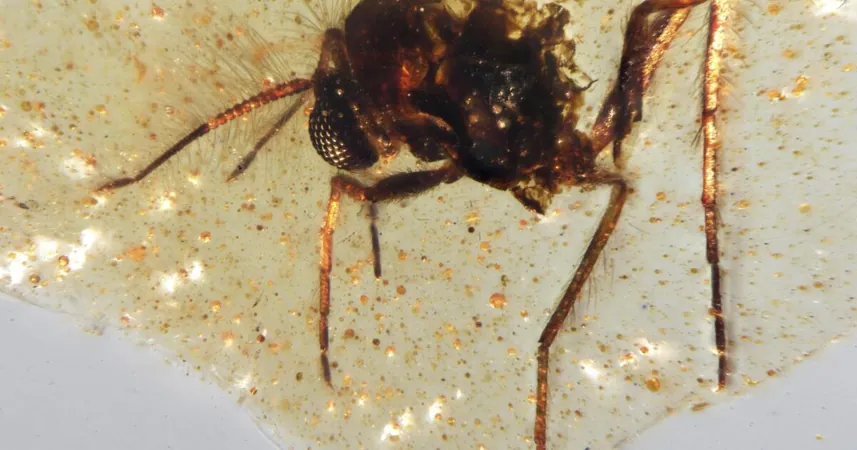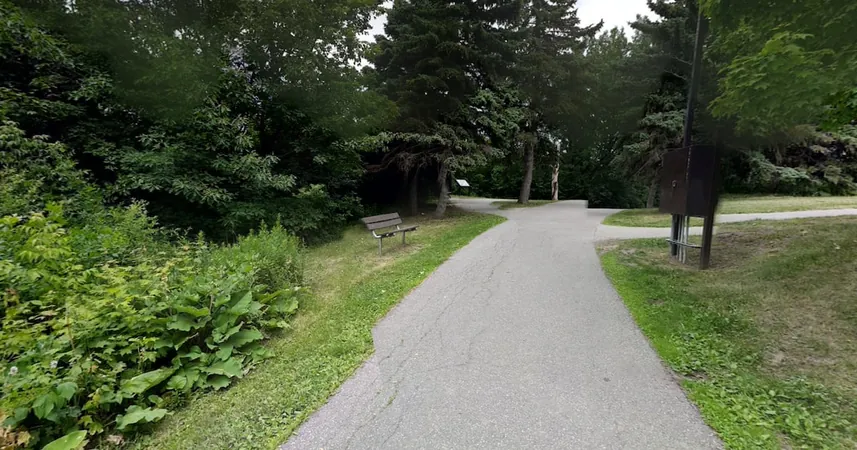
Unearthing the Past: Stunning Discovery of Insects in Amber Reveals Secrets of the Ancient Amazon
2025-09-22
Author: Benjamin
A Revolutionary Find in South America
In an exciting breakthrough, scientists have uncovered prehistoric insects preserved in amber, marking a historic first for South America. This discovery offers a unique window into a world when flowering plants were just beginning their spectacular rise.
Journey Back 112 Million Years
The remarkable specimens, dating back 112 million years, were found in a sandstone quarry in Ecuador. Fabiany Herrera, a curator of fossil plants at the Field Museum in Chicago, highlighted how this study, published Thursday in Communications Earth and Environment, expands our knowledge of ancient ecosystems.
Filling the Gaps in Earth's History
For over a century, amber deposits over 130 million years old have predominantly been located in the Northern Hemisphere. This absence of similar finds in the Southern Hemisphere, specifically the antiquated supercontinent Gondwana, has puzzled scientists like David Grimaldi from the American Museum of Natural History.
A Treasure Trove of Ancient Insects
This discovery introduces researchers to ancient beetles, flies, ants, and wasps previously unknown in South America’s fossil record. Ricardo Pérez-de la Fuente, a paleoentomologist from the Oxford University Museum of Natural History, noted that these pieces of amber serve as valuable snapshots of ancient life, crucial for understanding the intricate relationships between insects and flowering plants during the age of dinosaurs.
A Look into a Different World
Analyzing the ancient samples, Herrera elaborated on how the lush rainforest of the time was starkly different from today’s Amazon. Contrary to modern greenery, the ancient forest was filled with ferns and conifers, featuring unique species like the monkey puzzle tree, which have since disappeared.
Uncovering the Hidden Gem
The Genoveva quarry, well-known to local geologists and miners, became a focal point for further exploration after co-author Carlos Jaramillo from the Smithsonian Tropical Research Institute pursued its potential. His exploration, guided by geological notes from nearly a decade ago, revealed an astonishing abundance of amber.
More Secrets Await in the Amber Trove
This amber treasure trove is just the beginning. Researchers plan to delve deeper into the analysis, striving to unveil more secrets about Cretaceous-era biodiversity, particularly how these tiny insects played a vital role in the evolution of flowering plants. Pérez-de la Fuente emphasized the profound significance of this period—one that heralded one of nature's most successful partnerships.









 Brasil (PT)
Brasil (PT)
 Canada (EN)
Canada (EN)
 Chile (ES)
Chile (ES)
 Česko (CS)
Česko (CS)
 대한민국 (KO)
대한민국 (KO)
 España (ES)
España (ES)
 France (FR)
France (FR)
 Hong Kong (EN)
Hong Kong (EN)
 Italia (IT)
Italia (IT)
 日本 (JA)
日本 (JA)
 Magyarország (HU)
Magyarország (HU)
 Norge (NO)
Norge (NO)
 Polska (PL)
Polska (PL)
 Schweiz (DE)
Schweiz (DE)
 Singapore (EN)
Singapore (EN)
 Sverige (SV)
Sverige (SV)
 Suomi (FI)
Suomi (FI)
 Türkiye (TR)
Türkiye (TR)
 الإمارات العربية المتحدة (AR)
الإمارات العربية المتحدة (AR)